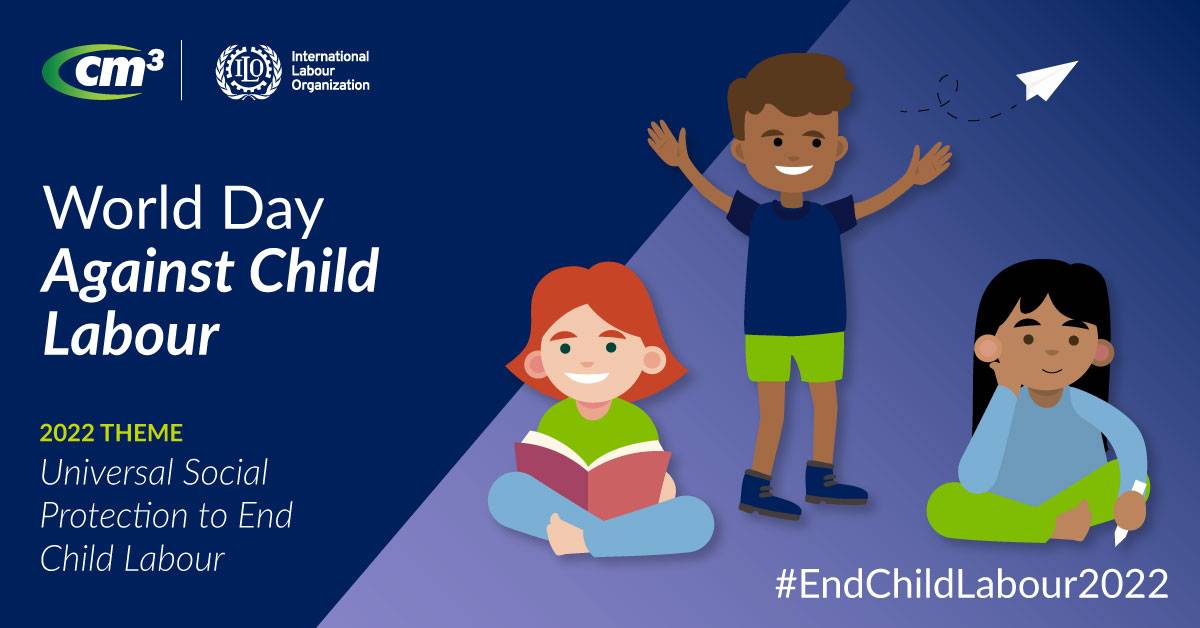Occurring annually on the 12th of June, World Day Against Child Labour aims to provide awareness to the issue of child labour and empower everyone to take action against it.
Whilst it is heartening that child labour has decreased 38% over the last decade, significant action is still required in order to address the over 150 million remaining children estimated to still be in child labour.
The 2030 Sustainable Development Goals adopted by the United Nations in 2015 comprises 17 goals and 169 targets that concern promote economic, social, and environmental development. Target 8.7 directly addresses the global effort to combat of child labour in all its forms.
Target 8.7
“Take immediate and effective measures to eradicate forced labour, end modern slavery and human trafficking and secure the prohibition and elimination of the worst forms of child labour, including recruitment and use of child soldiers, and by 2025 end child labour in all its forms.”
The 2022 theme of “Universal Social Protection to End Child Labour” calls for increased investment in social protection systems and schemes to establish solid social protection floors and protect children from child labour.
What is Child Labour?
Child Labour can take many forms, and it is defined by international standards as “work that is hazardous, demands too many hours, or is performed by children who are too young”. Children may be put to work through necessity for survival, adult exploitation of their vulnerability, deficiencies in available education, and as a result of cultural customs and traditions.
The 5th Global Conference on the Elimination of Child Labour was held in Durban, South Africa 15-20 May 2022, culminating in the adoption of the Durban Call to Action on the Elimination of Child Labour. These include several commitments including ending child labour in agriculture, realising children’s right to education, and increased financing and international cooperation for the elimination of child labour and forced labour.
Nearly half of all modern child labour occurs in Africa, however it is a significant issue throughout Asia and the Pacific.
Learn more about how and why child labour happens on the End Child Labour website.
Eliminating Child Labour from Your Supply Chain
Coming into force on 1 January 2019, the Modern Slavery Act 2018 (the Act) requires companies (with annual revenue exceeding $100 million AUD) and other entities to publish annual statements defining what they are doing to prevent slavery in their operations and supply chains.
Businesses are becoming increasingly concerned with the risks of modern slavery, including child labour, in their supply chains. Increasingly, when engaging vendors, businesses are expecting transparency and assurance from their vendors regarding how their goods are manufactured, where, by who, and under what conditions. By including modern slavery issues in organisational compliance, risk, and contractor management, progress is being made in order to address these issues and promote ethical business across the board.
A flexible and inclusive strategy around supplier engagement should be based on:
- Communicating Expectations
- Engaging on a Risk Basis
- Avoiding outsourcing compliance
- Building meaningful partnerships and providing workers with access to information
- Using existing supplier engagement processes
Using Cm3 for Modern Slavery Reporting
The Cm3 WHS Contractor Prequalification System includes a dedicated Modern Slavery Module, allowing businesses utilising its established prequalification process to tailor a flexible, risk-based approach to supplier engagement.
The module includes key aspects of effective supplier engagement such as communicating expectations, giving contractors access to information, prioritising action based on risk and evaluating the level and quality of work done by the contractor to date on eliminating the risk of modern slavery from their supply chain.
Businesses using Cm3 to manage their contractors are equipped with tools that can assist the collection of information about Vendors (including Contractors and Suppliers). These tools can assist them in meeting reporting requirements under the Modern Slavery Act 2018, and include:
- Ethical Sourcing Questionnaire
- Customised Surveys for Further Due Diligence
- Dashboards & Reporting
- Cm3 Ethical Sourcing and Modern Slavery Contractor Management
- Flagging of Potential Risk Issues
- Education & Awareness
Read more about Cm3’s Ethical Sourcing & Modern Slavery module.
Example: Scentre Group 2021 Modern Slavery Statement
Cm3 client Scentre Group manages an expansive portfolio of Westfield Living Centres housing more than 12,000 retailers valued at $50 billion. In their most recent Modern Slavery Statement, the group detailed how they utilise the Cm3 Contractor Safety Management and Prequalification Platform to assist in their procurement and assessment of contractors.
“Suppliers who provide services in our Westfield Living Centres and are pre-qualified using Cm3 (an external supplier prequalification provider) also complete a modern slavery self-assessment questionnaire as part of our onboarding and prequalification process.
In 2022, Scentre Group will continue to review the results of these self-assessments to identify any additional areas of high risk, the level of supplier understanding and engagement about the risk of modern slavery, and use this review to inform our approach for further supplier engagement.”
